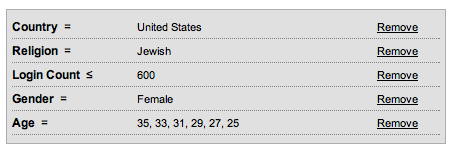What Runs Where Gets a Makeover & Upgrade
What Runs Where is a competitive analysis tool that many of you will be familiar with.
It’s one of the most popular research tools in the affiliate space. If you are involved with any kind of banner buying or advertising on the Google Content Network, What Runs Where is a one stop shop for all the campaign ideas you could ever need.
I gave it a positive review last year, but I had a few complaints about the interface. I saw it as unnecessarily complicated and confusing for a media buying newbie.
There was no shortage of mesmerizing data, but the software was low on shiny, whimsical bells and whistles. Presentation isn’t everything, but it certainly makes life easier when you’re plunging through mountains of data and numbers.
Well, it turns out the What Runs Where team has taken that complaint onboard. The software has recently been upgraded with a brand spunking new interface.
It’s looking really good.
What Runs Where now supports an additional three countries; Spain, Germany and France; to go with the previous collection of America, Canada, Australia and the UK.
The new targeting is particularly helpful for offers that dominate in European markets, like the Need For Speed example above.
Not only can you spy on prime sources of European traffic, but you can swipe readily translated creatives for your own testing purposes.
Of course, in the interest of not being a total dickbag, let me remind you…
Stealing is bad, kids.
Use What Runs Where to pinpoint the market trends, and then create something better.
Running the same creatives on the same traffic sources is only ever going to leave you two steps behind somebody much richer than yourself. That said, this is probably the single most effective tool for digging data from right under the fingernails of your competition.
Another welcome new addition to What Runs Where is placement suggestions. It’s the first in a series of so-called ‘actionable insights’ that will be landing in the future.
Placement suggestions sifts through what I can only imagine to be a nuclear-sized wasteland of data remnants. It looks at an advertiser’s existing placements and then suggests additional placements based on that data. I’m not sure how accurate – or how profitable – the internal algorithm is, but at first glance it looks very useful.
If I were to search through Christian Mingle’s placements, for example, I would find a huge list of sites that the merchant is currently targeting. By using placement suggestions, I can find alternatives – ranked by similarity – that aren’t currently being targeted.
This looks like a great tool for steering clear of competition. I’ve already found some niche, off-the-wall placements, that I’m in discussion to place small buys with.
What Runs Where is a data-beast. That much was known before. It’s encouraging to see that the team are taking active steps to turn their huge hoard of data in to insights and actual campaign suggestions.
I still think there’s potential to go further and give more meaning to the data. The algorithms are clearly powerful and effective, but little is said of how numerical ratings such as Similarity and AdStrength are calculated. I think it would be awesome if these terms were explained and perhaps graphed and documented to shed new meaning.
All things considered though, What Runs Where is still the honeybadger of all affiliate research tools. A must-have data slayer for anybody involved with media buying.
Recommended This Week
Head over to Finch Premiums for 300+ pages of my affiliate marketing tips.
I’ve just taken on modding duties over at the StackThatMoney Forum. This means I’ll be posting even more tips and advice over there, to go with the immense wealth of case studies and materials from the rest of the community. Sign up for access.
New reader? Add me to your RSS, or follow me on Twitter.





No comments yet.
Add your comment